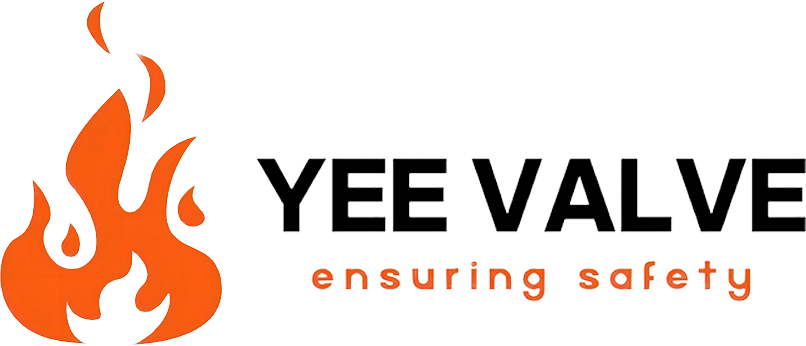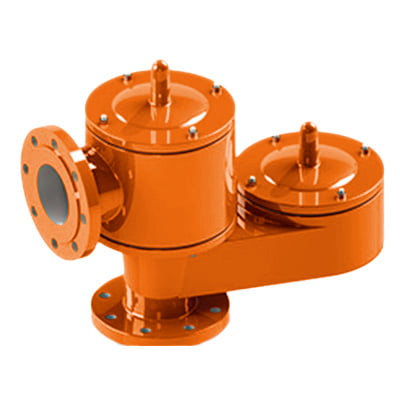Untuk saiz injap nafas yang betul, ikuti langkah -langkah ini:
Langkah 1. Tentukan spesifikasi tangki
- Ukur diameter tangki dan ketinggian.
- Identify the tank’s location and the environmental conditions it will be exposed to.
- Kumpulkan Lembaran Data Keselamatan Bahan (MSDS) untuk media yang disimpan dalam tangki, yang termasuk:
*Media Flash Point
*Titik mendidih media
*Haba laten pengewapan
*Jisim molekul relatif wap.
Langkah 2. Kirakan kadar aliran maksimum
Mewujudkan kadar pengisian maksimum tangki (dalam meter padu per jam).
Mewujudkan kadar pengosongan maksimum tangki (dalam meter padu per jam).
Langkah 3. Menetapkan tekanan dan keperluan vakum
*Tentukan tekanan dalaman yang ditetapkan (dalam mbar) bahawa injap mesti dibebaskan.
*Tentukan tekanan vakum set (dalam mbar) bahawa injap mesti mengendalikan.
*Pertimbangkan suhu yang ditetapkan dan tentukan sama ada jenis bolong akan menjadi paip atau atmosfera.
Langkah 4. Pilih saiz injap
*Berdasarkan kadar aliran yang diperlukan dan set tekanan, gunakan pengiraan yang sesuai untuk menentukan saiz injap. Menggunakan piawaian seperti API 2000 atau ISO 28300 untuk garis panduan saiz yang tepat. Ramai pengeluar menyediakan perisian atau carta saiz untuk membantu memilih saiz injap yang betul.
*Saiz injap boleh berkisar dari 2 "hingga 12" (50 hingga 300 mm), bergantung kepada keperluan aplikasi dan pengiraan aliran.
Langkah 5. Bahan dan ciri tambahan
*Choose the valve material based on the media’s compatibility and environmental conditions. Options include aluminum, ductile iron, stainless steel, carbon steel, and various alloys.
*Pertimbangkan ciri-ciri tambahan seperti salutan pelindung, sensor penggera, atau reka bentuk khas (mis., Penangkap api, mekanisme yang dimuatkan oleh musim bunga atau berat) seperti yang diperlukan untuk aplikasi tertentu.
Langkah 6. Menggunakan sokongan pengeluar
Sekiranya saiznya tidak jelas, banyak pengeluar menawarkan perkhidmatan saiz injap untuk menyediakan prestasi injap optimum dan spesifikasi teknikal yang kos efektif. Kami menawarkan perkhidmatan saiz dan pengiraan yang disesuaikan dengan keperluan pelanggan tertentu.
Dengan mengikuti langkah-langkah ini, anda dapat memastikan bahawa injap berukuran berukuran dengan betul untuk permohonan anda, memberikan perlindungan yang berkesan terhadap keadaan tekanan dan vakum dalam tangki simpanan anda.


Injap Penafasan lwn Injap Pelega Tekanan PRV
Kita semua tahu memilih injap yang betul adalah penting untuk memastikan keselamatan dan kecekapan untuk [...]
Ogos
Prosedur Ujian Injap Pernafasan
Dalam sistem tangki industri, injap pernafasan adalah komponen utama untuk memastikan bahawa [...]
Ogos
3 Langkah Mudah untuk Memilih Injap Pernafasan yang Tepat
YeeValve ialah bahagian khusus THINKTANK yang membuat injap pernafasan. Kami menawarkan khidmat nasihat percuma [...]
Ogos
Perkhidmatan & sokongan teknikal
1. Bantuan Teknikal Yee Valve menawarkan panduan pakar untuk pemilihan, pemasangan dan penyelenggaraan injap. Pelanggan [...]
Mei
Senarai Semak Pesanan
Apabila anda membuat pesanan kepada Yee Valve, berikut adalah langkah yang perlu anda ikut [...]
Mei
Bagaimana untuk Mengukur Injap Nafas?
Untuk saiz injap pernafasan dengan betul, ikut langkah berikut: Langkah 1. Tentukan Spesifikasi Tangki Ukur [...]
Mei